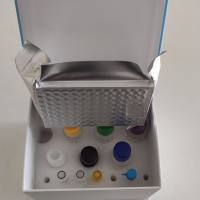Gene Transfer Using Targeted Filamentous Bacteriophage
互联网
818
Phage-mediated gene transfer offers an alternative method of introducing genes into specific cell types, including cell lines ( 1 – 4 ) and primary cell cultures ( see Fig. 1 ). Recent studies demonstrate that filamentous bacteriophages can be engineered to transfer genes to mammalian cells by attaching a targeting ligand to the phage surface either noncovalently ( 1 ) or genetically ( 2 – 4 ) and, thus, directing phage particles to specific cell surface receptors ( see Fig. 1 ). Successful gene transfer and subsequent protein expression is measured using a reporter gene such as green fluorescent protein (GFP), neomycin phosphotransferase, or β-galactosidase. In fact, any gene with an appropriate mammalian transcriptional promoter and polyadenylation signal can be incorporated into a ligand-targeted phage vector ( see Note 1 ). It is this combination of ligand retargeting and insertion of a mammalian expression cassette that confers mammalian tropism to bacteriophage. These modified phage act like nonproductive animal viral vectors but can be propagated and manipulated genetically with all the conveniences of a phage vector.
Fig. 1. Transduction of mammalian cells by ligand-targeted phage. ( A ) Phage vectors are genetically modified by insertion of a mammalian promoter-regulated reporter gene (GFP) and fusion of a ligand to a surface coat protein (pIII). The resulting phage particles deliver the reporter gene to targeted cells that express the appropriate receptor. ( B ) Auto-fluorescent GFP-positive cells, resulting from transduction of primary rat olfactory bulb cell culture by epidermal growth factor (EGF)-targeted phagemid particles, observed 96 h after phage addition. Explanted cells were grown for 8 d on polylysine-laminin-coated plates before transfection by phage. Original magnification: �200. ( See color plate 11, following p. 254).









